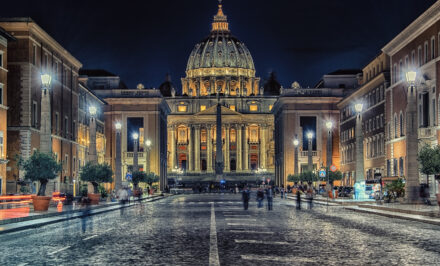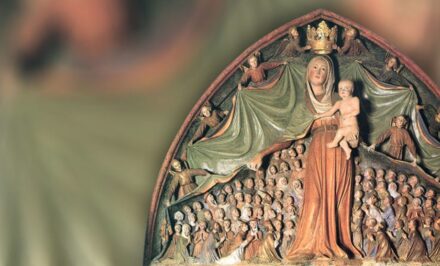
 WORLD OF WORK, Carlos Barrio e Lipperheide. One of the greatest difficulties that leaders face in their work is to distinguish between the different types of challenges that they should deal with to achieve their goals. A very popular belief is that challenges can be simply solved by implementing technical questions. This belief – limiting as it is – is probably one of the greatest difficulties that a leader faces.
WORLD OF WORK, Carlos Barrio e Lipperheide. One of the greatest difficulties that leaders face in their work is to distinguish between the different types of challenges that they should deal with to achieve their goals. A very popular belief is that challenges can be simply solved by implementing technical questions. This belief – limiting as it is – is probably one of the greatest difficulties that a leader faces.
![]()
According to R. Heifetz and M. Linsky[1] we can identify two great challenges: technical and adaptive challenges. This first can be solved by learning a technical skill and can be dealt with a fair amount of certainty. In contrast, adaptive challenges, that is, those that are not dependent on skills or technical knowledge, refer to cultural or emotional issues or are values-based which require a change of attitude from the leader and his team in relation to the current practices. In other words, it demands learning that goes beyond the purely technical.
Generally speaking, most of the challenges we face are a mix of both these aspects. The technical aspects are generally fixable and clear. In contrast, adaptive challenges are often hidden which means that we often ignore them.
The view of reality often limits and conditions our ability to find new possibilities
It is precisely this break in adaptive learning that the leader should worry about, encouraging his team to discover how the view of reality often limits the ability to identify the new possibilities that are there. This change often involves uncertainty, the pain of a possible loss and requires a review of previous practices.
It is probably the inflexibility to see and confront these adaptive challenges that has resulted in the failure of many companies’ projects, believing that it dealt only with technical changes.
The Pear Tree at Ground Zero
 An incident comes to mind that provides a metaphor for the uncountable possibilities that are always before us so that we can achieve our dreams and overcome the adaptive gap:
An incident comes to mind that provides a metaphor for the uncountable possibilities that are always before us so that we can achieve our dreams and overcome the adaptive gap:
There was one last survivor to be rescued from Ground Zero where the 9/11 attacks took place in Manhattan, NYC in 2001. It had been buried for a month and a half below the ruins and had resisted the thousands of tons of cement that fell on it.
At the start of November 2001, among the ruins of Ground Zero which was still smouldering, the rescue and clean-up teams made an unusual discovery: a tree, 98% of which had been burnt, but despite this it had started to sprout shoots along a small area of its trunk that had been consumed by the flames. It had survived more than 1,650 degrees centigrade generated by the explosions and fire.
It is said that some of the people who witnessed this moment were unable to contain their tears. It was a small sign of life in the midst of such desolation, sadness and horror.
The tree was moved to a nursery in Brooklyn so that it could be nurtured back to life. The following spring, it flowered and new branches grew. Unbelievably in March 2010, a powerful storm wrenched the tree from the ground. But true to its name, it resisted and recovered![2]
Making a comeback

Nevertheless, we know that despite everything, we hold within us – like the pear tree – shoots from which we can revive and flower in the midst of the confusion and stifling heat. A leader should clarify and accompany this process, offering his help so that his team can discover possibilities in situations that appear uncertain, frightening and confusing.
Rebuilding the twin towers or tightening security measures to protect against a terrorist attack was not a technical problem, if you know what to do. The real challenge was adaptive: how to recover emotionally and vitally from the ashes of a similar attack; how to adapt to a new reality, to a world that will never be the same.
In companies we face many circumstances with these kind of challenges – which R. Heifetz and M Linsky describe as “the sustainability of change depends on having the people with the problem internalize the change”[3] – and do not believe that our bosses and upper management have a solution to the challenge will be given.
From the idea to life, from ‘someone’ to me
In this respect, leaders have the unique task of organically transferring and passing on to their teams the responsibility of internalizing challenges so that they will take ownership of them. Otherwise, they will not come to life and will remain merely ideas in the leader’s mind, such that the change that is desired will not be experienced by the various levels of the organization and will not reach the grassroots.
For this reason, an adaptive challenge should first be interiorized by the leaders themselves, that is, it should be experienced as such, in an authentic manner and without masks. Otherwise it cannot penetrate into the deepest part of the person. Fr. Kentenich comments on “life that is stuck on covers and besieges the core of our personalities and prevents them from expressing themselves.[4]
Only in our authenticity can we engage in “unmasking the true self” [5] and not artificially. Concretely it means leading “people who uphold their idea out of inner conviction, and who co-operate through thick and thin. But they do so independently and with initiative.”[6]
It will be through the leader’s internal attachment with his truth (and consequently with himself), that penetrates to the deepest part of his being, that change can be enacted because he will have embodied and passed from the idea into life.
Carlos E. Barrio y Lipperheide
27/3/14
[1] Ronald A. Heifetz – Marty Linsky, “Liderazgo sin Límites” [Leadership Without Limits]. Ed. Paidós Empresa, 2011, págs 27 y ss.
[2] This survivor is a flowering pear tree which was planted in the 1970s in the square at the World Trade Center, on the far east side (near Church Street).
[2] In December 2010, it was move to its current location, at the World Trade Center Memorial.
[3] idem.
[4] Joseph Kentenich, “Free and Wholly Human”. Ed Patris (2003), p153.
[5] idem, pág 181.
[6] idem, pág 167.
Original: Spanish – Translation: Sarah-Leah Pimentel, South Africa













